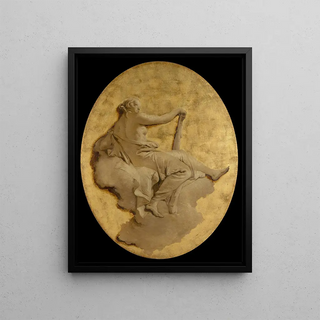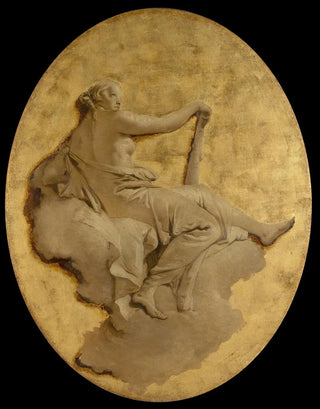Art print | Allegorical figure of a woman with a club - Giovanni Battista Tiepolo


View from behind

Frame (optional)
In the world of Baroque art, certain works stand out for their ability to transcend time and captivate the collective imagination. The "Figure allégorique d'une femme avec une massue" by Giovanni Battista Tiepolo is one of those creations that, through its visual intensity and symbolic depth, invites viewers to reflect on power and representation. This piece, both majestic and emotive, embodies the ideals of its era while offering a unique perspective on the role of allegorical figures in art. By exploring this work, we delve into a world where beauty and meaning intersect, revealing the subtleties of 18th-century artistic thought.
Style and uniqueness of the work
Tiepolo's style is characterized by a masterful use of light and color, creating dynamic compositions that seem to come alive before the viewer's eyes. In the "Figure allégorique d'une femme avec une massue," the artist employs a rich and vibrant palette, where delicate nuances blend with bold contrasts. The woman, the central figure of the piece, is depicted with a grace and strength that evoke both gentleness and power. Her expression, simultaneously serene and determined, reflects a fascinating duality, mirroring the complex role of allegories in the visual culture of the time. Tiepolo thus manages to capture the very essence of allegory, transforming a simple representation into a profound reflection on themes of virtue, wisdom, and strength.
The artist and his influence
Giovanni Battista Tiepolo, one of the undisputed masters of Italian Baroque, knew how to leave his mark on his era through a prolific and varied body of work. Born in 1696 in Venice, he was trained in a rich artistic environment, where he developed a keen sense of visual storytelling. Tiepolo is recognized not only for his grand frescoes but also for his ability to incorporate mythological and allegorical elements into his compositions. His influence extends well beyond his time, inspiring many

Matte finish

View from behind

Frame (optional)
In the world of Baroque art, certain works stand out for their ability to transcend time and captivate the collective imagination. The "Figure allégorique d'une femme avec une massue" by Giovanni Battista Tiepolo is one of those creations that, through its visual intensity and symbolic depth, invites viewers to reflect on power and representation. This piece, both majestic and emotive, embodies the ideals of its era while offering a unique perspective on the role of allegorical figures in art. By exploring this work, we delve into a world where beauty and meaning intersect, revealing the subtleties of 18th-century artistic thought.
Style and uniqueness of the work
Tiepolo's style is characterized by a masterful use of light and color, creating dynamic compositions that seem to come alive before the viewer's eyes. In the "Figure allégorique d'une femme avec une massue," the artist employs a rich and vibrant palette, where delicate nuances blend with bold contrasts. The woman, the central figure of the piece, is depicted with a grace and strength that evoke both gentleness and power. Her expression, simultaneously serene and determined, reflects a fascinating duality, mirroring the complex role of allegories in the visual culture of the time. Tiepolo thus manages to capture the very essence of allegory, transforming a simple representation into a profound reflection on themes of virtue, wisdom, and strength.
The artist and his influence
Giovanni Battista Tiepolo, one of the undisputed masters of Italian Baroque, knew how to leave his mark on his era through a prolific and varied body of work. Born in 1696 in Venice, he was trained in a rich artistic environment, where he developed a keen sense of visual storytelling. Tiepolo is recognized not only for his grand frescoes but also for his ability to incorporate mythological and allegorical elements into his compositions. His influence extends well beyond his time, inspiring many






